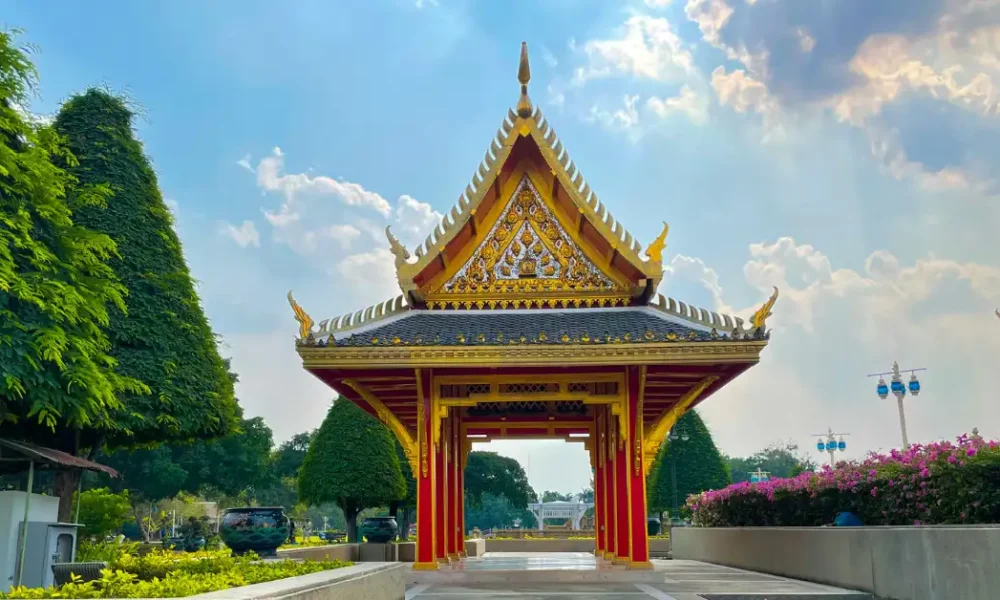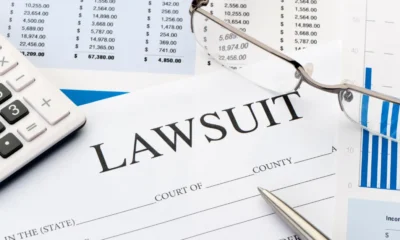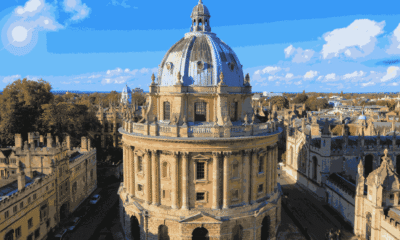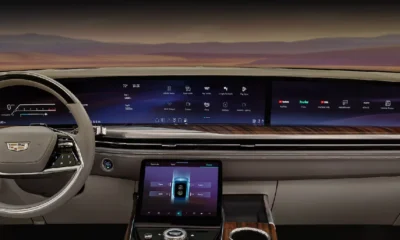Travel
Top 15 Amazing Places to Visit in Orlando for an Unforgettable Trip
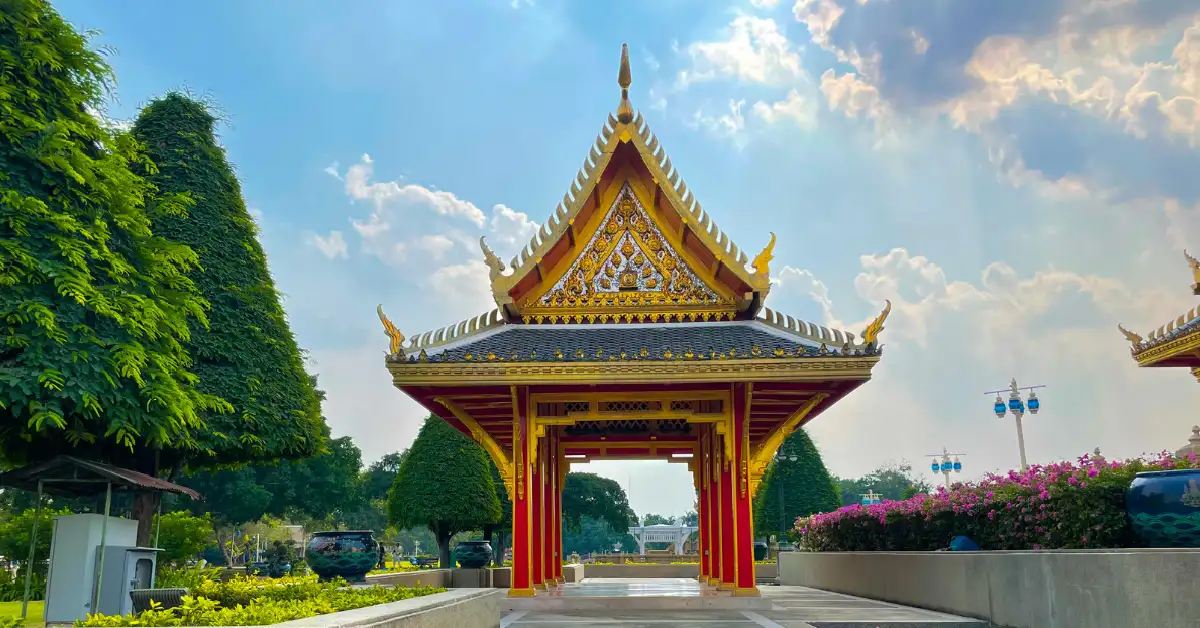
Orlando is often called the theme park capital of the world, but there’s much more to this city than thrilling rides and magical kingdoms. Whether you’re planning a family vacation, a romantic getaway, or a solo adventure, Orlando has something for everyone. From world-class attractions to hidden natural escapes, this city blends excitement with relaxation in unique ways.
This guide explores the best places to visit in Orlando that guarantee memorable experiences. You’ll discover iconic theme parks, cultural hubs, shopping havens, outdoor adventures, and family-friendly activities—all in one place.
1. Why Orlando is a Top Travel Destination
Orlando attracts millions of visitors each year thanks to its blend of entertainment, culture, and natural beauty. It’s home to some of the most famous theme parks on the planet, yet it also offers beautiful lakes, scenic gardens, and vibrant neighborhoods.
Travelers love Orlando because it caters to every type of visitor—thrill-seekers, families, couples, and even business travelers attending conventions. The city is constantly evolving, adding new attractions and improving existing ones to ensure visitors always have something fresh to explore.
2. Theme Parks That Define Orlando
No list of places to visit in Orlando is complete without mentioning its legendary theme parks.
-
Walt Disney World Resort – The ultimate magical kingdom with multiple parks, rides, and family experiences.
-
Universal Orlando Resort – Famous for its movie-themed attractions, including the Wizarding World of Harry Potter.
-
SeaWorld Orlando – A marine adventure park with thrilling rides and animal encounters.
-
LEGOLAND Florida – Perfect for families with younger kids, filled with creative and interactive activities.
More article Here
3. Family-Friendly Attractions Beyond Rides
Orlando offers plenty for families outside of rollercoasters:
-
Orlando Science Center – Hands-on exhibits make learning fun for all ages.
-
Crayola Experience – A colorful world of creativity for kids.
-
Gatorland – Get close to Florida’s famous alligators in a safe and entertaining environment.
4. Natural Escapes and Outdoor Fun
If you need a break from the crowds, Orlando’s natural beauty will surprise you:
-
Harry P. Leu Gardens – A peaceful retreat filled with vibrant flowers and greenery.
-
Lake Eola Park – A central spot for swan boat rides, jogging, and picnics.
-
Wekiwa Springs State Park – Ideal for kayaking, hiking, and exploring Florida’s unique springs.
5. Cultural Hotspots and Museums
Orlando’s culture is just as dynamic as its rides:
-
Orlando Museum of Art – Rotating exhibits showcasing national and international artists.
-
Dr. Phillips Center for the Performing Arts – A hub for concerts, theater, and dance performances.
-
Mennello Museum of American Art – Highlights folk and contemporary American art.
6. Shopping & Entertainment Districts
Shopaholics and entertainment lovers will find endless options:
-
The Mall at Millenia – Luxury shopping in an upscale environment.
-
ICON Park – An entertainment hub with restaurants, attractions, and the iconic Orlando Eye.
-
Disney Springs – Shopping, dining, and live entertainment in one spot.
7. Food & Dining Experiences Worth Trying
Orlando’s dining scene blends global cuisines with local flavors. From fine dining to food trucks, visitors can enjoy authentic Latin, Asian, and Southern dishes. Don’t miss the chance to try Florida seafood specialties like grouper and stone crab.
8. Nightlife and Evening Attractions
When the sun sets, Orlando comes alive with:
-
Live music venues hosting jazz, rock, and international performances.
-
Nightclubs and rooftop bars offering city views and dance floors.
-
Evening shows and dinner theaters that combine food with entertainment.
9. Best Places for Couples in Orlando
Romantic spots include:
-
Lake Eola Swan Boats – A charming date idea.
-
Wine bars in Downtown Orlando – Perfect for a relaxing evening.
-
Hot air balloon rides – An unforgettable way to see the city from above.
10. Budget-Friendly Attractions
Traveling on a budget? Check out:
-
Orlando Farmers Market – Free entry and local vibes.
-
Art galleries and free museum days.
-
Public parks and lakes that don’t cost a dime.
11. Hidden Gems You Shouldn’t Miss
Some lesser-known places to visit in Orlando include:
-
Mead Botanical Garden – A peaceful, less crowded alternative.
-
Kennedy Space Center (nearby) – Perfect for space enthusiasts.
-
Lake Nona Sculpture Garden – An artistic outdoor escape.
12. Tips for First-Time Visitors
-
Plan your itinerary ahead to maximize time.
-
Stay hydrated—Florida heat can be intense.
-
Use shuttle services to save time and money.
-
Visit parks early in the morning to avoid long lines.
13. Comparison Chart of Top Attractions
| Attraction | Best For | Highlights | Average Visit Time |
|---|---|---|---|
| Walt Disney World Resort | Families & Couples | Magical kingdoms, rides, parades | 2–3 days |
| Universal Orlando Resort | Movie Fans | Harry Potter world, thrill rides | 1–2 days |
| SeaWorld Orlando | Animal Lovers | Marine shows, roller coasters | 1 day |
| ICON Park | Entertainment | Orlando Eye, dining, nightlife | Half-day |
| Lake Eola Park | Nature & Relaxation | Swan boats, city skyline views | 2–3 hours |
14. FAQs About Places to Visit in Orlando
Q1. What is the best time to visit Orlando?
The best time is between March and May, when the weather is pleasant, and crowds are manageable.
Q2. How many days do you need to explore Orlando?
Ideally, 5–7 days allows time to visit major theme parks and explore local attractions.
Q3. Is Orlando good for couples?
Yes, Orlando offers romantic spots like hot air balloon rides, swan boats, and wine bars.
Q4. Are there free places to visit in Orlando?
Yes, parks, lakes, art galleries, and farmers markets offer free or low-cost fun.
Q5. What makes Orlando unique compared to other U.S. cities?
Its blend of theme parks, cultural venues, and natural beauty makes it unlike any other city.
15. Conclusion
Orlando is far more than just a theme park destination. From breathtaking gardens and cultural centers to thrilling rollercoasters and romantic getaways, it’s a city that offers something for everyone. Whether you’re traveling with family, a partner, or on your own, these places to visit in Orlando guarantee memories that will last a lifetime.
Travel
Unlocking Mapserver Park County: A Deep Dive into GIS Mapping in Park County
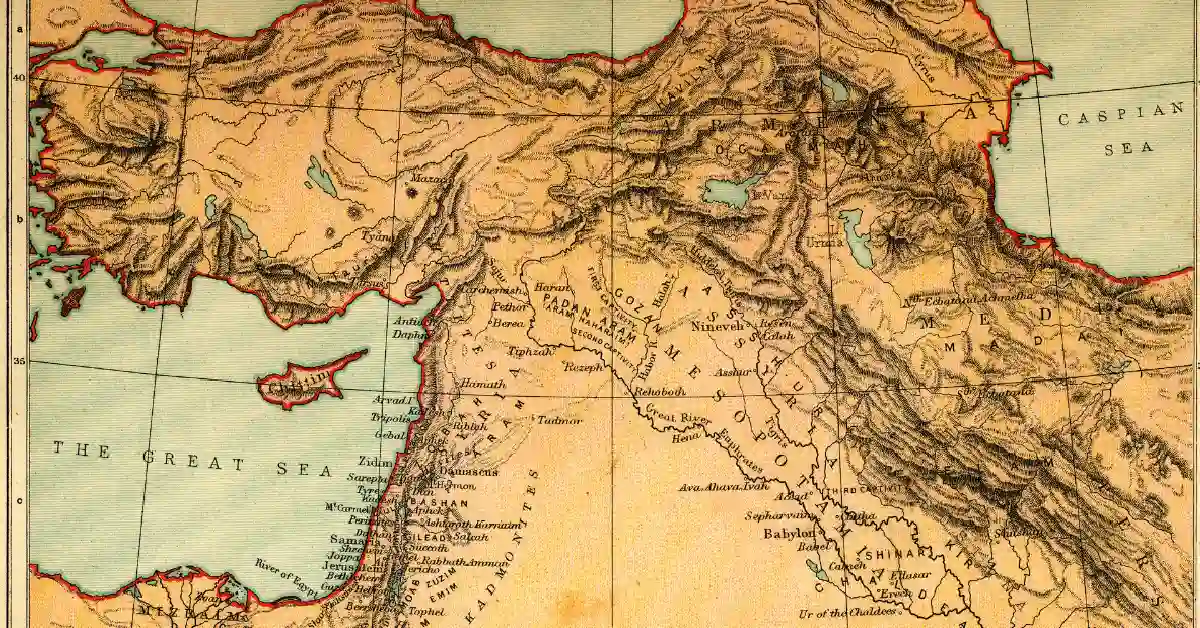
Introduction
In today’s world, geographic data powers critical decisions: land use, infrastructure, emergency response, development, and more. Mapserver Park County sits at the crossroads of open web mapping and real-world impact. By leveraging MapServer tools within Park County’s geographic information systems, planners, citizens, and officials gain clarity, transparency, and insight into the spatial patterns that shape everyday life.
This article explores what Mapserver Park County is, how it works inside Park County’s GIS ecosystem, what benefits and challenges it brings, and how it compares to alternative mapping strategies. We also present a practical comparison chart for ease of understanding. Before conclusion, you’ll find five FAQs that address common doubts.
What Is “Mapserver Park County”?
“Mapserver Park County” refers to the application or implementation of MapServer (or server-based web mapping infrastructure) in the jurisdiction of Park County (whether Park County in Colorado or Wyoming). In effect, an installation or configuration of MapServer serves spatial data (vector layers, raster layers, parcels, roads, zoning) to users in Park County via the web or internal portals.
MapServer is an open-source mapping engine that can render maps, reply to spatial queries, and produce map tiles or dynamic maps. It supports many geographic formats and standards (raster, vector, shapefiles, PostGIS, WMS, WFS) and handles coordinate transformations. The integration of MapServer with Park County’s GIS infrastructure is what we call “Mapserver Park County.”
In Park County’s operations (for example, the GIS department of Park County, Colorado), the use of a map server helps present zoning, parcels, address points, and land use planning maps to both internal staff and to the public. (Park County’s GIS division states that it maintains digital ownership maps, boundaries, and supports planning and emergency mapping functions.)
Thus, “Mapserver Park County” is not a standalone product — it’s the bridge between raw spatial data and user-facing maps, powered by MapServer within the context of Park County’s governance.
More Article Here
Why Use MapServer in Park County?
MapServer offers many advantages when used in local governments like Park County:
-
Open-Source & Cost Efficiency
Because MapServer is open source, Park County avoids licensing costs of proprietary GIS servers. Budget constraints in county GIS departments make open frameworks especially appealing. -
Standards Support & Interoperability
MapServer supports OGC standards (like WMS, WFS), allowing integration with other GIS tools, desktop GIS, and services that follow open geospatial protocols. -
High Performance & Scalability
It is engineered to deliver maps quickly and handle large volumes of spatial requests. That means users exploring parcels or zoning layers get responsive performance. -
Flexible Data Support
Whether Park County stores parcels in shapefile format, PostGIS, or other spatial databases, MapServer can serve them. It handles raster layers, overlays, hillshades, imagery, and more. -
Customization & Styling Control
The county’s GIS team can define styles, labels, classes, and dynamic rendering rules, tailoring maps to specific needs (e.g. highlighting wildfire risk zones, flood areas, or development parcels). -
Web Access & Transparency
By exposing maps online, citizens can explore property boundaries, zoning maps, parcel histories, and infrastructure plans. This transparency supports public engagement and trust. -
Support for Core County Functions
GIS in Park County often supports road maintenance planning, emergency dispatch, wildfire risk mapping, boundary maintenance, and development review. A map server underpins those workflows.
In short, embedding MapServer within the Park County GIS infrastructure yields both technical and governance benefits.
How MapServer Works in a County GIS Environment
Let’s walk step-by-step through how the MapServer component fits into the broader GIS architecture of a county like Park County:
-
Data Storage & Preparation
All spatial data (parcels, roads, zoning, elevation, imagery) are stored in geodatabases or file formats (e.g. shapefiles, GeoTIFFs, PostGIS). This is where raw data is maintained and updated. -
MapFile / Configuration
A MapServer mapfile (or equivalent configuration) defines which layers to expose, their styling (colors, symbology, labels), scale thresholds, projection settings, and what the server will permit (queries, feature access). -
Rendering & Tile Generation
The server renders map requests on the fly or precomputes map tiles. When a user pans and zooms, MapServer responds with newly rendered tiles or images appropriate for that viewport. -
Query & Feature Services
Users may click features (e.g. parcel lot) to retrieve attribute data. MapServer supports query functions and attribute responses, and (when configured) WFS or WMS GetFeature requests. -
Client Side / Web Portal
A web application (web GIS viewer) uses JavaScript mapping libraries to fetch tiles and overlays via MapServer endpoints. Users see interactive base maps, overlays (parcels, zoning, roads), and query tools. -
Maintenance & Updates
When GIS staff update the underlying data (new parcels, zoning changes, road updates), MapServer reflects those changes immediately (or after cache refresh) so the public sees current maps. -
Security & Access Control
Some layers may be restricted (e.g. sensitive infrastructure). MapServer allows configuration of access rights—public vs internal use only.
This integrated flow is how “Mapserver Park County” enables map-driven decision support in local governance.
Key Use Cases in Park County
Here’s how Park County (Colorado or Wyoming) might leverage MapServer:
-
Parcel & Ownership Exploration
Citizens or realtors can view parcel boundaries, legal descriptions, ownership, lot sizes, and overlay that with planning zones or flood zones. -
Zoning & Land Use Visualization
Zoning maps (residential, commercial, conservation) can be visualized. Proposed zoning changes can be previewed before public hearings. -
Emergency Planning & Wildfire Risk
Overlay areas of fire danger, evacuation zones, and response routes. MapServer enables the dynamic display of hazard zones and resource placement. -
Infrastructure & Road Maintenance
Display road conditions, maintenance schedules, and planned upgrades. Layer road network, asset locations, and service areas. -
Public Participation & Transparency
Residents can explore maps related to planning proposals, overlays, or redevelopment zones—boosting public understanding and involvement. -
Environmental & Conservation Layers
Display habitat zones, watershed areas, slope, soil, elevation, conservation easements, etc. -
Permit & Development Review
Permit offices can use server maps to cross-check whether proposed developments lie in restricted zones, floodplains, or protected lands.
These use cases show how MapServer becomes a backbone of spatial decision-making in Park County.
Challenges & Best Practices
While MapServer implementation offers many advantages, counties must be mindful of certain challenges and apply best practices:
-
Data Quality & Currency
A map server is only as good as its underlying data. Ensuring that parcel, zoning, imagery, and road data are current is essential. -
Caching Strategy
Overreliance on on-the-fly rendering can slow performance. Implementing tile caching (precomputed tiles) helps speed map delivery. -
Projection & Coordinate Systems
Misalignments arise if data layers use inconsistent coordinate systems. Strong discipline in projection management is critical. -
Scalability & Hardware
A server must handle concurrent users, heavy map requests, and rendering load. Investment in appropriate hardware (memory, CPU, fast I/O) matters. -
Access Permissions & Security
Some data may be confidential (e.g. critical infrastructure). Careful access control and authentication must be built in. -
User Interface & Usability
For the public, maps must be intuitive—legend, zoom controls, search, layer toggles. Poor UI undermines value. -
Maintenance Over Time
Staff must maintain mapfiles, update services, monitor server health, and revise styling as needs evolve. -
Documentation & Metadata
Clear metadata and documentation increase trust: each data layer should have source, last update, accuracy, and contact info.
By anticipating these challenges, Park County can maximize return on its MapServer infrastructure.
Comparison: MapServer vs Other Local GIS Delivery Methods
Below is a comparison chart that contrasts MapServer deployment in Park County against other common alternatives (e.g. proprietary GIS servers, static map delivery, cloud GIS services). This helps clarify trade-offs and choices.
| Feature / Metric | MapServer in Park County | Proprietary GIS Server (licensed) | Static Map Delivery / PDFs | Cloud GIS Platform / SaaS GIS |
|---|---|---|---|---|
| Cost / Licensing | Low (open source) | High (licensing & support fees) | Very low once generated | Subscription / usage fees |
| Customization | High (full control over mapfiles) | Moderate to high (within framework) | Minimal (static images) | Varies (sometimes limited) |
| Scalability / Performance | Good (with caching, hardware) | Good (vendor-optimized) | Not scalable (static) | Excellent, elastic scaling |
| Interoperability & Standards | Strong (supports OGC, WMS, WFS) | Varies (often supports standards) | Low (just images) | Often strong in standards |
| Real-time / Dynamic Updates | Yes (live data) | Yes | No (static snapshots) | Yes |
| Control & Ownership | Full local control | Partial control (vendor constraints) | Full control of generation | Shared control, dependency on provider |
| Maintenance & Staff Skill | Needs in-house GIS expertise | Requires vendor support or skilled staff | Low (once created) | Requires vendor understanding + admin |
| Offline / Local Usage | Can be deployed locally | May require special licensing | Works offline as PDF | Dependent on internet |
| Suitability for Park County Scale | Excellent for county scale | Good but costly | Limited utility | Good for dynamic usage but cost risk |
This table provides a clear view: MapServer delivers a compelling balance of flexibility, openness, and performance for county GIS needs, especially when Park County has or can build local GIS capacity.
Implementation Steps: How Park County Can Deploy Mapserver
Below is a high-level road map for Park County to adopt or refine a MapServer deployment:
-
Inventory & Audit Spatial Data
List all spatial layers (parcels, roads, zoning, elevation, imagery) and check for quality, accuracy, and update procedures. -
Choose Infrastructure
Decide server hardware or virtual machines (CPU, RAM, disk I/O, storage) and operating system (Linux often favored). -
Install GIS Stack
Set up dependencies: GDAL/OGR, PROJ, MapServer core binaries, required libraries. -
Create MapFiles / Configuration
Define which layers to expose, symbology, scales, labels, queries. Test local rendering and styling. -
Integrate With GIS Database
Connect mapfile layers to GIS data sources (PostGIS, shapefiles, raster directories). -
Set Up Caching / Tile Service
Use tile cache systems (e.g. MapCache) or pre-generate tile sets to speed map delivery. -
Build Web Frontend
Use JavaScript libraries (Leaflet, OpenLayers) or custom viewers to request map tiles and user interactions (zoom, pan, feature query). -
Access Control & Security
Add authentication where needed, restrict layers, log usage, and monitor for security. -
Testing & Quality Assurance
Validate that maps align, features attribute properly, projections are correct, query functions work. -
Deploy & Public Launch
Open to public, internal users, and monitor usage, performance, and bug reports. -
Ongoing Maintenance & Updates
Schedule data updates, re-cache tiles, revise styling, monitor server health, and plan enhancements.
By following a careful phased approach, Park County GIS can ensure Mapserver deployment is sustainable and reliable.
The Future: Trends for Mapserver Use in Local Governments
Looking ahead, here are trends Park County should watch and potentially adopt:
-
OGC API / Feature API
The newer OGC APIs (Features, Tiles) are gradually replacing older WFS/WMS paradigms. MapServer continues to adopt these modern APIs. -
Vector Tiles & WebGL Rendering
Instead of raster tile delivery, vector tiles allow more flexible styling on the client side, smoother interactivity, and lower bandwidth usage. MapServer is evolving to support vector tile output. -
Integration with Real-Time Sensors
Incorporating real-time environmental sensor data (e.g. water sensors, air quality) into map services for more dynamic layers. -
Machine Learning & Spatial Analytics
GIS departments may layer predictive models (e.g. wildfire probability, flood risk) onto maps. MapServer can serve the resulting raster or vector layers. -
Mobile-Friendly Map Interfaces
With more users on mobile, map viewers must be responsive, efficient, and intuitive on smaller screens. -
Cloud Hybrid Deployments
Even though MapServer is often locally hosted, hybrid setups with cloud backups, failover, or distributed caching can bolster resilience. -
Open Data Portals + APIs
Beyond serving maps, Park County may offer APIs or JSON endpoints that developers (or the public) can use directly.
By staying aligned with these trends, Park County can make its MapServer deployment future-ready.
5 FAQs (Frequently Asked Questions)
Q1: What’s the difference between MapServer and a desktop GIS?
A: A desktop GIS (e.g. QGIS) is for editing, analysis, and local work. MapServer is a web server component—meant to serve maps and spatial queries through the web. It doesn’t replace desktop editing tools but complements them by publishing maps.
Q2: Do I need a lot of hardware to run MapServer in Park County?
A: Not necessarily. For modest user loads and caching, a midrange server with good CPU, RAM (16 + GB) and SSD storage is adequate. As demand grows, scaling up or adding cache nodes helps.
Q3: Can citizens query parcel details on a MapServer-powered site?
A: Yes — with properly configured query and feature services, users can click on a parcel and retrieve attribute data (e.g. lot size, zoning). That interactivity is a core benefit.
Q4: How often must we update the spatial data?
A: It depends on changes. Parcels or zoning may update monthly or quarterly; roads might update as construction occurs. Ideally, updates should align with existing county workflows.
Q5: Is MapServer secure enough for restricted layers?
A: Yes — it supports layer-level permissions, requiring authentication, and will not expose restricted data if properly configured. Best practice includes using HTTPS, firewall, and access controls.
Conclusion
“Mapserver Park County” is not just a technical phrase — it’s a powerful mechanism to transform raw geographic data into accessible, responsive maps that empower both county decision-makers and the public. In a county like Park County, where land use decisions, emergency readiness, infrastructure planning, and citizen transparency matter, MapServer offers an open, flexible, and high-performance solution.
Proper implementation, quality control, caching strategies, and user-centered design distinguish a successful deployment from a fragile one. When aligned with GIS standards, secure practices, and evolving trends like vector tiles and OGC API, MapServer becomes a long-term pillar in the county’s GIS architecture.
Travel
Mini Jeep 125cc: The Ultimate Off-Road Beast for 2025 Adventures

The Mini Jeep 125cc has become the talk of the town in the off-road and recreational vehicle segment. Designed for adventure seekers and outdoor lovers, this compact yet powerful machine offers rugged performance, affordable pricing, and unmatched fun for both kids and adults. Whether you want to explore trails, beaches, or your backyard, the Mini Jeep 125cc delivers the thrill you need with a stylish design and dependable engine.
In this detailed guide, we’ll explore everything you need to know about the Mini Jeep 125cc in 2025, including its engine specs, performance, safety features, pricing, pros and cons, maintenance tips, FAQs, and a comparison chart with other mini off-road vehicles.
Why the Mini Jeep 125cc Is Gaining Popularity in 2025
The popularity of the Mini Jeep 125cc skyrocketed because it combines affordability, reliability, and all-terrain capability in one package. Families love it for backyard rides, young adults use it for camping trips, and off-road enthusiasts enjoy its compact power.
Key reasons for popularity include:
-
Compact size for easy storage and transport
-
Affordable price compared to ATVs and UTVs
-
Easy-to-maintain 125cc engine
-
Stylish military jeep-inspired design
-
Fun for both beginners and experienced riders
Mini Jeep 125cc Specifications & Features
| Feature | Mini Jeep 125cc (2025 Model) |
|---|---|
| Engine Type | 4-stroke, Single-cylinder, 125cc |
| Max Speed | 35–40 mph |
| Transmission | Semi-Automatic / 3-speed + reverse |
| Fuel Capacity | 3.5 liters |
| Fuel Economy | 40–45 km per liter |
| Braking System | Hydraulic Disc Brakes |
| Tires | All-terrain off-road tires |
| Seating Capacity | 2 persons |
| Dimensions | 88″ L x 38″ W x 34″ H |
| Weight Capacity | Up to 250 lbs |
| Safety Features | Seat belts, Roll bar option |
| Price Range (2025) | $1,300 – $1,800 |
Performance Review: Mini Jeep 125cc
The Mini Jeep 125cc engine delivers smooth power for both flat terrain and mild off-road trails. With a 3-speed transmission and reverse gear, it provides better control for younger riders.
-
Top Speed: Around 35–40 mph, ideal for recreational use
-
Fuel Efficiency: Up to 45 km/l, making it cost-effective
-
Ride Comfort: Wide tires and suspension absorb shocks well
-
Safety: Hydraulic brakes ensure quick stopping power
Comparison Chart: Mini Jeep 125cc vs Other Mini Off-Road Vehicles
| Feature | Mini Jeep 125cc | Mini ATV 125cc | Go-Kart 125cc |
|---|---|---|---|
| Engine Power | 125cc | 125cc | 125cc |
| Seating Capacity | 2 | 1 | 1–2 |
| Transmission | Semi-Auto + Reverse | Auto/Semi-Auto | Auto |
| Top Speed | 35–40 mph | 30–35 mph | 35 mph |
| Off-Road Capability | High | Medium | Medium |
| Price Range (2025) | $1,300–$1,800 | $1,200–$1,600 | $1,000–$1,500 |
Pros & Cons of Mini Jeep 125cc
Pros:
-
Affordable pricing
-
Fun, rugged design
-
Suitable for both kids and adults
-
Easy to maintain and repair
-
Good resale value
Cons:
-
Limited speed for advanced riders
-
Not suitable for extreme terrains
-
Smaller fuel tank compared to ATVs
Maintenance Tips for Mini Jeep 125cc
-
Check oil levels regularly – Change engine oil every 25–30 hours of use.
-
Inspect tires – Keep them properly inflated for better grip.
-
Brake inspection – Ensure hydraulic brakes work efficiently.
-
Battery care – Charge or replace as per usage.
-
Clean after off-road rides – Dirt buildup affects performance.
5 Frequently Asked Questions (FAQs)
Q1: What is the top speed of the Mini Jeep 125cc?
A: It reaches up to 40 mph, making it ideal for recreational use.
Q2: Can two adults ride the Mini Jeep 125cc comfortably?
A: Yes, it supports up to 250 lbs and seats two people comfortably.
Q3: Is the Mini Jeep 125cc safe for kids?
A: With seat belts and controlled speed, it’s safe under adult supervision.
Q4: How fuel-efficient is the Mini Jeep 125cc?
A: It offers 40–45 km per liter, making it budget-friendly for daily use.
Q5: What is the average price of the Mini Jeep 125cc in 2025?
A: Prices range between $1,300 and $1,800 depending on the model.
Conclusion
The Mini Jeep 125cc is an excellent choice for families, adventure seekers, and off-road enthusiasts looking for an affordable yet fun ride in 2025. With its rugged design, dependable engine, and budget-friendly price, it strikes the perfect balance between performance and value. Whether for backyard fun or light off-road adventures, this compact jeep offers endless excitement without breaking the bank.
Travel
Eerd River: The Hidden Gem of Nature, History, and Adventure
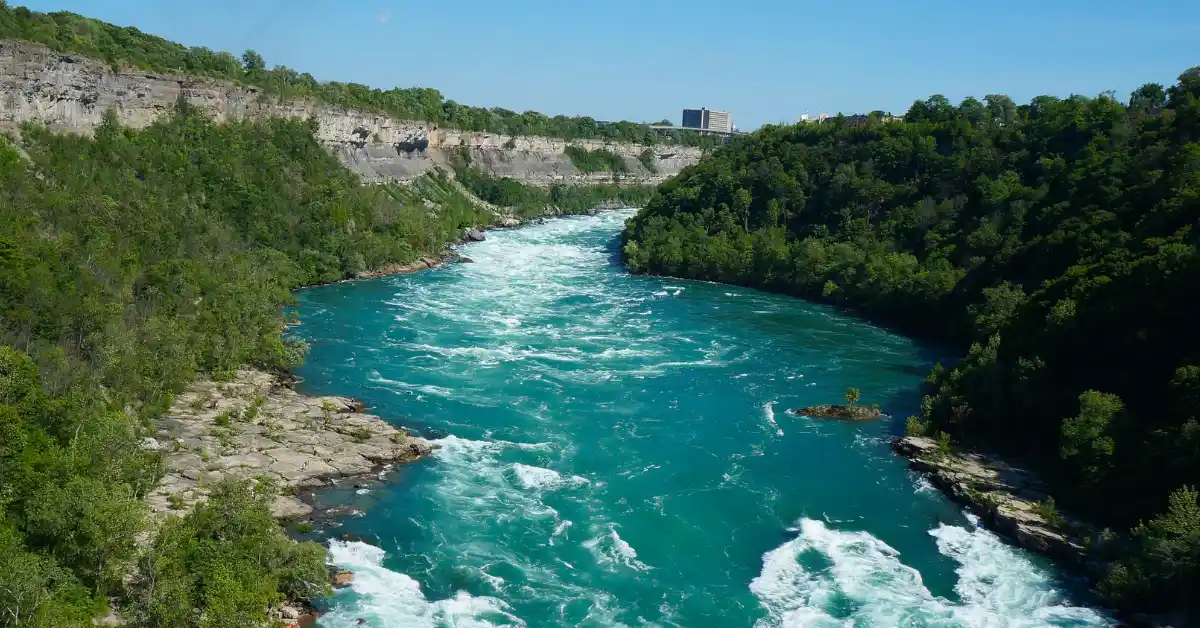
The Eerd River is a captivating blend of scenic beauty, rich history, and thrilling adventures. Flowing gracefully through serene landscapes, it offers everything from biodiversity hotspots to cultural experiences. Whether you’re a nature enthusiast, an adventurer, or a history buff, this river promises something extraordinary.
This article dives deep into the Eerd River’s history, geography, ecosystem, recreational opportunities, and cultural importance—crafted to inform and engage readers while following the latest SEO best practices.
1. Introduction to Eerd River
The Eerd River has long been cherished for its pristine waters and breathtaking surroundings. Known for its crystal-clear streams, lush greenery, and diverse wildlife, it serves as a lifeline for local communities and ecosystems. Its importance extends beyond natural beauty—playing a crucial role in cultural heritage, economy, and sustainable tourism.
2. Geography and Location
The Eerd River originates from highland springs, winding its way through valleys, forests, and agricultural regions before joining larger water systems. The river basin supports farming, fishing, and small-scale industries, making it vital for both people and nature.
Key geographical features include:
-
Length: Approximately 200 km
-
Source: Highland springs with seasonal snowmelt
-
Flow Regions: Rural villages, forests, agricultural lands
-
Mouth: Merges with a major water body
Its diverse terrain makes it a hotspot for eco-tourism and exploration.
3. Historical Significance
For centuries, the Eerd River has witnessed the rise and fall of civilizations. Ancient settlements flourished along its banks, benefiting from fertile soils and abundant freshwater. Archaeological findings reveal traces of early trade routes, cultural rituals, and traditional water management systems.
Local folklore celebrates the river as a sacred entity, often featuring in songs, dances, and religious festivals.
4. Wildlife and Biodiversity
The Eerd River basin shelters a rich variety of flora and fauna, including rare and endangered species. Its freshwater ecosystem supports migratory birds, freshwater fish, and unique plant life.
Common species around the Eerd River:
-
Birds: Kingfishers, herons, eagles
-
Fish: Trout, carp, catfish
-
Mammals: Otters, deer, wild boars
-
Plants: Water lilies, reeds, medicinal herbs
The river’s ecological balance attracts researchers, photographers, and wildlife enthusiasts from around the world.
5. Recreational Activities and Tourism
Tourism along the Eerd River has grown steadily due to its mix of adventure and relaxation. Popular activities include:
-
Boating & Kayaking: Calm waters make it perfect for beginners.
-
Fishing Expeditions: Trout and carp fishing draw enthusiasts year-round.
-
Hiking & Camping: Trails along the river offer scenic views and camping spots.
-
Birdwatching: Migratory birds make it a paradise for ornithologists.
Eco-tourism initiatives ensure that tourism supports local livelihoods while protecting the environment.
6. Cultural and Economic Impact
The Eerd River sustains farming communities through irrigation and provides fish for local markets. Traditional festivals celebrate its role in daily life, featuring boat races, river dances, and harvest rituals.
Handicrafts made from river reeds and eco-friendly tourism projects generate additional income, blending culture with sustainable development.
7. Environmental Challenges and Conservation
Despite its beauty, the Eerd River faces challenges such as:
-
Seasonal water shortages
-
Pollution from agriculture and tourism
-
Habitat loss due to urbanization
Conservation efforts focus on:
-
Water Quality Monitoring
-
Reforestation Along Riverbanks
-
Community Awareness Programs
-
Eco-Tourism Regulations
Sustainable practices aim to protect the river for future generations.
8. Best Time to Visit Eerd River
The ideal time to explore the Eerd River is during spring (March-May) and autumn (September-November) when:
-
Temperatures are mild
-
Wildlife sightings peak
-
Festivals and cultural events occur
Summer offers water sports, while winter attracts those seeking serene landscapes with light snowfall.
9. Comparison Chart: Eerd River vs. Other Rivers
| Feature | Eerd River | River A | River B |
|---|---|---|---|
| Length | 200 km | 150 km | 300 km |
| Major Activities | Boating, Fishing, Hiking | Fishing, Farming | Tourism, Wildlife |
| Biodiversity | High | Moderate | High |
| Cultural Importance | Strong | Limited | Moderate |
| Tourism Infrastructure | Developing | Developed | Basic |
| Best Season to Visit | Spring & Autumn | Summer | Winter |
10. FAQs
Q1: Where does the Eerd River originate?
A: It originates from highland springs fed by seasonal snowmelt.
Q2: What activities can tourists enjoy at the Eerd River?
A: Boating, fishing, hiking, camping, and birdwatching are popular activities.
Q3: Is the Eerd River important for local communities?
A: Yes, it supports farming, fishing, festivals, and eco-tourism initiatives.
Q4: Are there endangered species around the Eerd River?
A: Some migratory birds and aquatic species near the river are rare or endangered.
Q5: What is the best season to visit the Eerd River?
A: Spring and autumn offer ideal weather, wildlife sightings, and cultural events.
11. Conclusion
The Eerd River stands as a beacon of natural beauty, cultural heritage, and adventure opportunities. From its crystal-clear waters to its vibrant festivals, it captivates travelers and locals alike. As eco-tourism grows and conservation efforts strengthen, the river promises to remain a sanctuary for wildlife, history, and unforgettable experiences for years to come.
-

 Must Read5 months ago
Must Read5 months agoThe Truth Behind the Direct Fairways Lawsuit: What You Need to Know
-

 Business5 months ago
Business5 months agoTop Chartered Accountants Benefits: Guide, Tips, FAQs & More
-

 Tech5 months ago
Tech5 months agoblogsternation .com: Complete Beginner’s Guide, Benefits, and FAQs
-

 Tech4 months ago
Tech4 months agoHow to Upgrade Graphics Driver: Boost Speed, Fix Issues & Enhance Gaming
-

 Sports5 months ago
Sports5 months agoHow Many Quarters in Football? A Complete Guide to Game Structure and Timing
-

 Education5 months ago
Education5 months agoOxford Acceptance Rate: What It Means, Why It Matters, and How to Beat It
-

 Business5 months ago
Business5 months agoUnlocking the Truth About gomyfinance.com Credit Score
-

 Must Read5 months ago
Must Read5 months agoEscalade Must Have Accessories for the Ultimate Cadillac Experience

